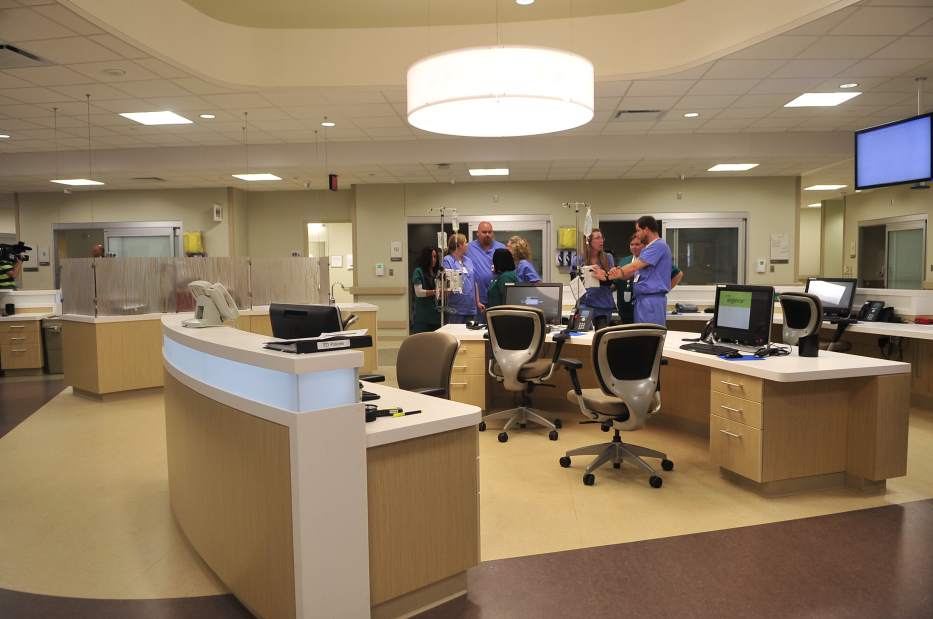Monroeville's newest hospital, UPMC East, set to open July 2
No one is as proud of UPMC East as Joe Badalich.
From the improved storm-water management outside to the skylights in the post operation rooms, Badalich -- the construction project manager -- has watched his blueprints take shape over the past four years.
"It's bittersweet," said Badalich of Plum. "It's been (the contractors') building, and now it's not our building anymore. I didn't expect to be so saddened by it."
The seven-story, $250 million hospital and 460-space parking garage at the intersection of Mosside Boulevard and William Penn Highway is scheduled to open July 2.
UPMC offered a media tour of the facility last week.
The hospital will draw more than 400 employees to Monroeville's business district each day, in addition to patients and their families.
The new faces should bode well for local business, said Sean Logan, vice president of community relations for UPMC.
Roadwork and storm water management projects totaling $4.6 million are examples of UPMC's dedication to the community, Logan said.
Each year, the hospital system spends $565 million on community sponsorships and donations, he said.
"I think that's something that's understated," he said.
As UPMC puts the finishing touches on the 156-bed hospital, West Penn Allegheny Health System is working to improve the 350-bed Forbes Regional Hospital about a mile down the road.
Forbes, which opened in 1978, is undergoing a $20 million renovation and is pursuing designation as a Level II Trauma Center, which would enable it to treat severely injured people rather than transfer them to hospitals in Pittsburgh.
Health insurer Highmark Inc. is paying for the work at Forbes while awaiting approval to buy West Penn Allegheny for $475 million.
It plans to set up an integrated medical services network that can compete with UPMC, the region's dominant health system.
"At the end of the day, we are confident that the people of Monroeville and its neighboring communities will continue to rely on Forbes Regional Hospital as the close-to-home provider of choice for a much more comprehensive scope of advanced health care services," West Penn Allegheny spokesman Dan Laurent said.
While UPMC officials emphasized high-end amenities, private rooms and the latest medical technology, there was no wasteful spending in the construction of UPMC East, Badalich said.
"It's not opulent at all," he said. "We kept it as small as we could to not have wasted spending."
During the tour, officials boasted a fast turnaround in the emergency room - the ER is expected to admit 35,000 patients a year, said Dr. Timothy VanFleet, medical director and chief of emergency medicine at UPMC East.
Lab testing will be done in the emergency department, which will reduce the wait time for results in a typical ER by about 45 minutes, he said.
Private elevators will accommodate employees and patients headed to surgery on the second floor.
A tracking system in the waiting area will keep families informed of a patient's status during the surgery process.
An automated lifting device in the intensive care unit will enable two nurses to maneuver 770 pounds with ease, while a wall of smart glass alleviates the need for curtains, officials said.
Private rooms reserved for long-term patients feature room service on demand, a fold-out couch and a recliner that doubles as a wheel chair for patient transportation.
There are no restrictions on visiting hours.
Despite new technology and amenities, UPMC East vice president of medical affairs Timothy Gaul said it reminds him of his earlier days working in community-based hospitals.
"You worked with your neighbor and you took care of your neighbors," he said.
Staff writers Luis Fábregas and Alex Nixon contributed to this report.



